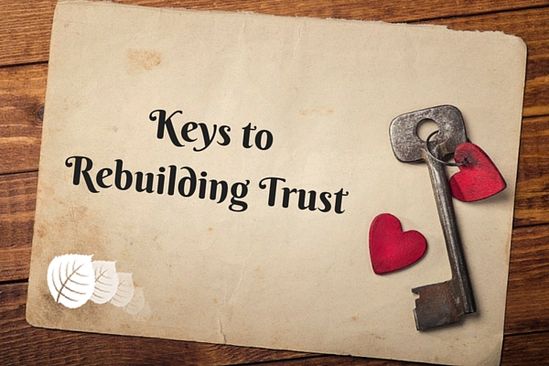
Introduction: When Trust Shatters, Can Love Survive?
Few experiences cut deeper in a marriage than broken trust. Whether it’s caused by dishonesty, betrayal, or neglect, the emotional wound often feels unbearable. Partners who once promised each other honesty and loyalty may now struggle with suspicion, anger, and doubt.
But here’s the good news: trust can be rebuilt. Countless couples have walked through betrayal, disappointment, and miscommunication, and found healing on the other side. Rebuilding isn’t easy, but with consistent effort, patience, and mutual commitment, it is possible to restore intimacy and connection.
This guide explores practical, research-backed strategies to help couples rebuild trust in a broken marriage—step by step.
Why Trust Matters in Marriage
Trust is the foundation of intimacy. Without it, love becomes fragile and communication breaks down. A marriage without trust feels like a house with cracked walls—still standing, but unsafe.
Key reasons trust is essential:
- It builds emotional safety.
- It strengthens communication.
- It nurtures intimacy and vulnerability.
- It reduces conflict and insecurity.
According to the Gottman Institute, trust is not built on grand gestures but through consistent, small acts of honesty and reliability.
Common Causes of Broken Trust
Trust in marriage can break for different reasons. Recognizing the root cause is the first step toward healing.
Common triggers include:
- Infidelity (emotional or physical)
- Financial dishonesty
- Repeated broken promises
- Emotional neglect or withdrawal
- Addictions (gambling, substance abuse, online behavior)
Each cause carries unique challenges, but all can be addressed with intentional steps.
Step 1: Acknowledging the Damage
You can’t rebuild what you deny is broken. Both partners must acknowledge the pain caused and take responsibility.
What this looks like:
- The offending partner accepts accountability without excuses.
- The hurt partner expresses feelings openly, without suppression.
- Both agree that rebuilding trust is a shared goal.
Denial only prolongs pain; acknowledgment begins healing.
Step 2: Open and Honest Communication
Honesty is the oxygen of rebuilding trust. Without open dialogue, suspicion grows and wounds deepen.
Tips for effective communication:
- Use “I” statements instead of accusations (“I felt hurt when…”).
- Listen without interrupting.
- Avoid minimizing your partner’s feelings.
- Set aside time for weekly check-ins.
👉 Research shows that couples who practice intentional communication are more likely to rebuild after betrayal.
Step 3: Consistency Over Time
Broken trust isn’t repaired overnight. The offender must prove reliability through consistent actions.
Examples of consistency:
- Following through on promises.
- Being transparent about daily activities.
- Showing up emotionally and physically.
Trust is like a bank account—it grows only with repeated deposits of integrity.
Step 4: Rebuilding Emotional Intimacy
Trust cannot be separated from intimacy. When couples reconnect emotionally, trust begins to reemerge.
Ways to rebuild intimacy:
- Spend intentional time together (date nights, shared hobbies).
- Practice physical affection (hand-holding, hugs).
- Share fears, dreams, and vulnerabilities.
Small moments of closeness heal big wounds.
Step 5: Seeking Professional Guidance
Sometimes, couples need a neutral third party to help rebuild trust.
Why therapy helps:
- Provides tools to manage conflict constructively.
- Helps partners understand underlying patterns.
- Offers accountability and structured healing.
Licensed marriage counselors, such as those accredited by the American Association for Marriage and Family Therapy, specialize in guiding couples through trust recovery.
Comparison Table: Actions That Heal vs. Actions That Harm
| Healing Actions | Damaging Actions |
|---|---|
| Admitting mistakes honestly | Denying or minimizing issues |
| Consistent follow-through | Repeated broken promises |
| Active listening | Interrupting or dismissing |
| Transparency with actions | Secretive behaviors |
| Seeking therapy if needed | Avoiding tough conversations |
Step 6: Setting Boundaries for the Future
Healthy boundaries create safety and prevent repeated breaches.
Examples of boundaries:
- Agreeing on transparency with phones or finances.
- Setting limits on time with people or activities that caused mistrust.
- Respecting personal space when needed.
Boundaries aren’t restrictions; they’re protections for the relationship.
Step 7: Practicing Forgiveness (Gradually)
Forgiveness doesn’t erase the past—it allows space for a new future.
Important truths about forgiveness:
- It’s a process, not an event.
- It doesn’t mean forgetting, but choosing not to weaponize past mistakes.
- It works best when paired with changed behavior.
Forgiveness frees both partners from being chained to past pain.
Step 8: Patience and Persistence
Rebuilding trust is often two steps forward, one step back. Impatience can destroy progress.
How to stay patient:
- Celebrate small wins (a kind gesture, open conversation).
- Accept setbacks as part of the journey.
- Remind yourselves why the marriage is worth fighting for.
Signs That Trust Is Being Restored
Rebuilding trust in a broken marriage can feel like walking in the dark. You may wonder: Are we really healing, or just pretending things are fine? The truth is, restoration doesn’t happen in one big leap—it’s seen in small but meaningful signs over time. Recognizing these signs gives couples hope and motivation to keep moving forward.
Here are the key indicators that trust is gradually returning:
1. Reduced Suspicion and Anxiety
In a broken marriage, doubt often lingers like a shadow. The hurt partner may constantly question the other’s words or actions. When trust begins to heal, suspicion softens.
What this looks like:
- You no longer feel the urge to check your partner’s phone or emails.
- Arguments aren’t dominated by accusations.
- Daily interactions feel lighter and less tense.
👉 Example: Instead of panicking when your partner comes home late, you accept their explanation without spiraling into mistrust.
2. Open and Honest Sharing Returns
When trust is broken, partners often withhold information out of fear of conflict. As trust rebuilds, openness increases.
Signs of this shift:
- Both partners share details about their day without hesitation.
- Transparency becomes natural—no need for secrecy.
- Conversations move beyond surface-level chatter to deeper topics.
Openness signals emotional safety, a cornerstone of renewed trust.
3. Consistency Becomes Noticeable
Consistency is the backbone of trust recovery. When a partner consistently follows through on promises, the other begins to relax.
Indicators of consistency:
- Promises, even small ones, are kept regularly.
- Actions match words—apologies are backed by change.
- Dependability is felt in both big and small matters.
👉 Example: If your partner promises to attend therapy sessions or handle household responsibilities, they do so without excuses.
4. Laughter and Joy Resurface
Couples burdened by broken trust often feel emotionally drained. As healing progresses, laughter and lightheartedness return.
Signs of joy coming back:
- You enjoy spending time together again, even in small ways.
- Inside jokes resurface, reminding you of your bond.
- Shared activities feel enjoyable instead of forced.
Joy is evidence that pain is being replaced by connection.
5. Physical Affection Feels Natural Again
Broken trust often creates emotional and physical distance. Healing is visible when affection begins to flow naturally.
Examples of this change:
- Hand-holding, hugs, or kisses return without hesitation.
- Intimacy feels safe and desired, not pressured.
- Small gestures—like a touch on the shoulder—become common again.
Physical closeness reflects emotional safety being restored.
6. Healthy Boundaries Are Respected
Trust is not about surveillance; it’s about respect. A clear sign of healing is when boundaries are set and honored.
Examples:
- If one partner needs space, the other respects it.
- Agreements around transparency (like finances or social media) are upheld.
- Boundaries reduce tension rather than fuel suspicion.
When boundaries are honored, safety and trust flourish.
7. Plans for the Future Feel Exciting Again
Couples stuck in mistrust often avoid talking about the future. Healing allows partners to dream together once more.
Indicators include:
- Discussing vacations, family plans, or long-term goals.
- Making financial or lifestyle decisions together.
- Expressing hope about growing old together.
Future planning shows that the relationship is no longer defined by the past.
8. Forgiveness Becomes Evident in Daily Interactions
Forgiveness doesn’t erase the past, but it changes how couples treat each other. You can tell forgiveness is taking root when:
- Arguments don’t always circle back to past mistakes.
- There’s less bitterness in tone during disagreements.
- Kindness outweighs resentment in daily interactions.
Forgiveness is proof that trust has room to breathe again.
Quick Table: Signs of Restored Trust vs. Lingering Brokenness
| Restored Trust | Lingering Brokenness |
|---|---|
| Calm acceptance of partner’s words | Constant suspicion and questioning |
| Open sharing about daily life | Withholding details out of fear |
| Promises consistently kept | Repeatedly broken commitments |
| Laughter and joy present | Emotional heaviness dominates |
| Natural physical affection | Reluctance or avoidance of closeness |
| Boundaries respected | Boundaries ignored or violated |
| Future plans discussed | Avoidance of long-term discussions |
✅ Key Takeaway: Trust isn’t restored through one grand gesture, but through many small and consistent acts that rebuild safety, honesty, and intimacy. Recognizing these signs helps couples celebrate progress and remain committed to the journey of healing.
Conclusion: Rebuilding Trust Is a Choice
A broken marriage doesn’t have to mean a broken future. Trust can be rebuilt, but it requires honesty, consistency, and patience from both partners. The journey is painful, but the reward—a deeper, stronger love built on resilience—is worth it.
Remember: trust is not a single act but a daily commitment. With open hearts, clear boundaries, and the courage to forgive, even the deepest wounds can heal.









